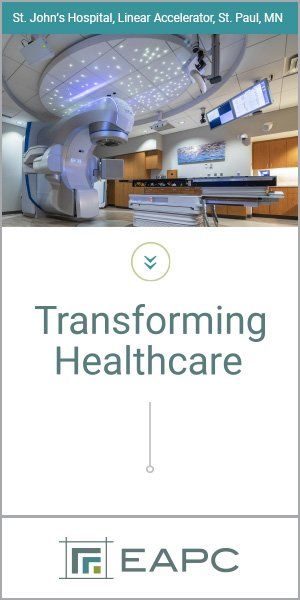ecent administrative actions from the federal government have sent chilling and difficult messages throughout the entire health care delivery system. Denying the value of vaccines or the need for medical research support or even medical research itself are among many such messages. Speaking from the perspective of mental health care, there is much of importance to consider when we evaluate and try to change these recent actions.
Health Care Policy
Understanding the Value of Medical Research
A mental health perspective
BY Sophia Vinogradov, MD
Mental health needs in our country are at a flexion point and in no uncertain terms represent a public health crisis. Teen depression and suicide are at an all-time high and one in five adults experience symptoms of mental illness. In addition, nearly every chronic medical condition is worsened by the presence of mental illness or substance misuse. The consequences of mental illness cost U.S. taxpayers almost $300 billion annually, which is the equivalent of an average economic recession.
The many reasons for how we have reached the point of a public health crisis are well worthy of separate consideration. An undeniable source of progress in addressing them, however, is coming through huge advances in medical research. We now know how to pre-empt and treat mental illness better than we ever have. Our field is rapidly developing both high-tech and low-tech solutions to identify at-risk individuals as quickly as possible and help them achieve a path to recovery. One such solution, where science has led to innovative clinical care, is the 2019 creation of the Early Psychosis Intervention Network (EPINET) — the result of about 10 years of research funded by the National Institute of Mental Health (NIMH). Through EPINET, specialized clinics across the country can all link to share their best practices.
Psychosis symptoms usually first appear in adolescents and young adults and if untreated can lead to school drop-out, work failures and years of struggle and disability. When I was in training, I was taught that young individuals with psychosis symptoms inevitably had a poor prognosis.
Today we know that this simply is not true. NIMH-funded research has proven that specialized treatment teams and carefully applied therapies can help young people experiencing psychosis recover and get their lives back on track. NIMH works with the Substance Abuse and Mental Health Services Administration (SAMHSA) ensuring that 10% of the federal mental health block grants to each state are used to set up these specialized treatment teams.
Nothing makes you truly feel “crazy” until you start hearing voices.
Congressional Action
Recently, over 200 colleagues and I had the opportunity to provide written public witness testimony from EPINET. This was given to Robert Aderholdt, R-Ala., chair of the House Appropriations Subcommittee on Labor, Health and Human Services, Education, and Related Agencies. Our goal was to urge opposition to budget cuts to National Institute of Health (NIH) research and to publicly funded mental health treatment programs such as those provided through SAMHSA.
We represented over 5,000 young people who have experienced psychosis; their parents and loved ones; their psychiatrists, nurses, social workers, psychologists and mental health specialists; and a team of researchers who are all dedicated to effective early intervention for youth experiencing serious mental health symptoms. Together we have successfully implemented 120 science-based clinical treatment programs in urban, suburban and rural areas located in 17 states in all four U.S. Census Bureau regions. EPINET clinics represent almost a third of the publicly funded early psychosis treatment programs in the U.S.
While at present there are no proposed direct cuts to EPINET programs, we are very concerned about the direction of the NIH and SAMHSA funding landscape, which poses threats to this type of work. There is significant evidence demonstrating that tax dollar investments fostering NIH early intervention research and supporting NIH-SAMHSA collaborations are good for American health and good for the American economy.
Early Psychosis
When a young person experiences psychosis, they have lost touch with reality. They may hear voices that aren’t there, or believe they are in mortal danger, or experience fragmentation of their thoughts and actions. It is terrifying. As one individual described their first symptoms: “I felt completely overwhelmed, like my brain had fragmented into pieces, and I knew that something was deeply, fundamentally wrong. I was shaken to the core– everything I understood about myself was falling apart. Something had changed in my brain, and I didn’t know if I would ever feel normal again. Many people struggle with their mental health—but nothing makes you truly feel “crazy” until you start hearing voices. It’s not just unsettling; it’s deeply demoralizing. You ask yourself: Am I going to recover from this? Will I ever go back to work? To my life?”
The answers to those questions used to be, “You are probably going to have a mental illness for the rest of your life. You will likely be disabled and have a difficult time finding meaningful work or relationships. You may end up living on the street, having chronic medical and substance abuse problems, and have a life expectancy that is 10-25 years shorter than the general population.”
Changing Outcomes and Lives
After almost two decades of early psychosis research and new program development in the United States, we now have different answers to those questions. We now know that we can implement and improve evidence-based treatments to help individuals recover and become thriving and productive members of society.
Not only that, but we know how to create continuous improvements in these treatments. Through EPINET and mental health block grants, we have created a unified learning health system. This means that each clinic measures its activities and outcomes in the same way, and we can pool our data to figure out which treatment helps which patients and how we can develop and share best practices across the country. You can learn much more — and more quickly — when you can study what is happening across several thousands of individuals.
To date, EPINET has treated over 5,000 young individuals who have sought relief from frightening and disabling symptoms such as hearing voices, experiencing unusual beliefs and fears, losing touch with reality and becoming disorganized in their speech and behavior. Many of them have come to us after their first psychiatric hospitalization, sometimes because their symptoms worsened to the point of impairing normal social, academic or work functioning; sometimes because of agitation or dangerousness; and sometimes because of suicidal ideas or gestures. For many individuals, persistent substance use is also a major problem.
With participants’ help and the support of their family members, we have gathered a tremendous amount of important information about their symptoms and their life circumstances, about their progress through treatment and about their outcomes. This national dataset is freely available to members of the scientific community. Through the expertise of a national data coordinating center, we are learning new insights that improve the quality and impact of early psychosis treatment. For example, we find that clients begin to experience improved symptoms, higher quality of life and improved social and role functioning after six months of treatment. Many participants are achieving their life goals: returning to school, getting jobs and developing new relationships. Some of them are becoming peer counselors and giving back to their community as employed or volunteer mental health specialists.
As one person described their recovery experience, “The care team provided me with the knowledge and tools to recognize and deal with my illness. It was very personalized and embraced my whole family from the start. I graduate from college this June. I’m making some money in an internship and have a thriving social life. I have my life back.”
It is critical for elected officials to protect and expand funding for early intervention in mental health.
Costly Consequences
Failure to address and ameliorate early psychosis has many negative downstream outcomes and can be considered in several ways.
Functional consequences: EPINET was developed because approximately 100,000 young people in the U.S. experience their first episode of psychosis every year. If their symptoms are not promptly identified and addressed, the personal and familial suffering that occurs is nearly impossible to describe. Patients feel that their mind and their actions are no longer under their control; their thinking and motivation are impaired; they often lose their social networks and become extremely isolated; and even simple life activities can seem unattainable. Parents, siblings and peers feel frightened and helpless in the face of symptoms that don’t respond to simply “talking it out.”
Even more concerning, the longer these symptoms go unrecognized and unaddressed, the worse the prognosis. Having psychosis symptoms is likely toxic to the brain, and a significant body of scientific evidence indicates that the longer the duration of untreated psychosis, the worse the clinical and functional outcomes. Sadly, the median duration of untreated psychosis in the U.S. is almost 1 1/2 years, compared to eight months in Europe. When early psychosis is not promptly identified and rigorously treated, it starts the young person on a downward trajectory to develop chronic psychiatric symptoms and substance use; not to respond well to treatment when it is finally offered; to experience higher levels of ongoing functional disability; and to require increasing amounts of public assistance. EPINET is designed to reverse this downward trajectory.
Medical consequences: Individuals with chronic psychosis symptoms also experience worse medical morbidity and mortality from cardiovascular disease, diabetes, metabolic syndrome and other chronic medical conditions. These factors result in a significantly shorter lifespan and collectively have been called a “public health scandal.” Medical consequences of psychosis need to be addressed very early on in young patients in order to prevent long-term medical morbidity. EPINET deepens our understanding of these issues and helps develop new solutions.
National economic consequences: The estimated economic burden of chronic psychotic illness in the U.S. has doubled over the past 10 years and was estimated at slightly over $300 billion in 2019. Nearly $250 billion of this was due to indirect costs such as caregiving, unemployment and premature mortality. While there is more longitudinal research to be done, initial modeling findings indicate that early psychosis intervention programs such as EPINET reduce health care costs over the long-term, by reducing both the direct and indirect costs.
A threat to progress: Severe cuts to the NIH and SAMHSA budgets that affect early intervention work will take the field backward. The critical learning health system progress that we have made with EPINET required years of investment and strong direction at the federal level to help coordinate researchers, clinical teams and publicly funded clinical programs across multiple states. The start-up costs and administrative burden have been significant as are the required data harmonization and coordination efforts. To stop or slow down this work now, when critical infrastructure and collaborative teams are in place, is irresponsible decision-making at its worst for several obvious reasons.
First, stopping or slowing this work threatens the goal of reducing long-term disability, chronicity and costs of serious mental illness in the U.S., because adolescent and young adulthood is the critical time to develop and study evidence-based interventions. It also threatens the goal of reducing the suicide death rate for teens and young adults, which has increased by 40-50% over the past decade and is now a national issue. Individuals with early psychosis have a 5-10% increased suicide rate and evidence-based treatment can reduce these rates, but further research is needed.
In addition, it is short-sighted in terms of looming future needs. With increasing cannabis legalization and higher potency forms of cannabis easily available, the rates of cannabis-induced first episode of psychosis will likely increase, suggesting that another serious public health crisis is just around the corner. The field desperately needs more research on understanding and addressing/mitigating cannabis-induced psychotic episodes in teens and young adults.
Budget cuts to NIH and SAMHSA funding that will affect research and clinical programs such as EPINET are not simply numbers on a spreadsheet—they jeopardize the current and future lives of teenagers and young adults all around the country, in every single state. It is critical for elected officials to protect and expand funding for early intervention in mental health. These investments are not just based on a solid foundation of scientific evidence and public health, they are the bedrock of a thriving and productive citizenry. Without them, it will be impossible to “make America healthy again” let alone contain health care costs.
Closing Thoughts
We are immensely proud to have six Minnesota clinics that are linked as part of EPINET, including clinics in Duluth and in St Cloud. Together we have treated nearly 1,000 youth in Minnesota and already learned important new findings that we are sharing locally and nationally.
Eighty percent of our clients show significant improvement in their symptoms and functioning by six months, and most are able to continue school, to find jobs and to pursue relationships. We’ve even had a few weddings to celebrate!
The success of EPINET proves that we can solve the public crisis of mental health needs, but only if we invest in developing the scientific evidence that tells us the best way to do so. Such work brings hope and health to individuals and their families, reduces long-term costs to society and creates new knowledge that helps others in the future. The proposed cuts to NIMH and SAMHSA will be the death knell of this exciting progress and other work like it here and around the country.
Sophia Vinogradov, MD, is the head of the Department of Psychiatry and Behavioral Sciences at the University of Minnesota School of Medicine.
MORE STORIES IN THIS ISSUE
cover story one
Broadening the Lens: Improving health data measurement
By Liz Cinqueonce, MBA, and Kate Hust, MD, MPH
cover story two
Safeguarding Surgery Standards: The legislative role in scope of practice issues


































